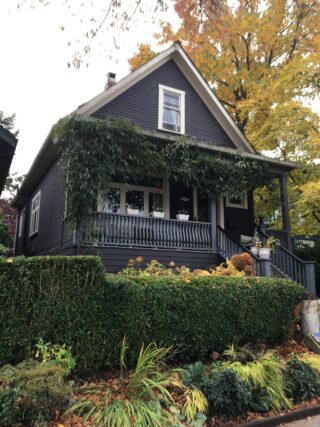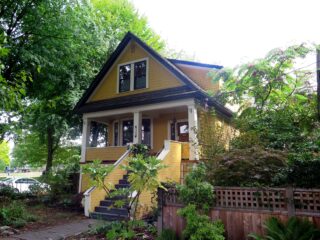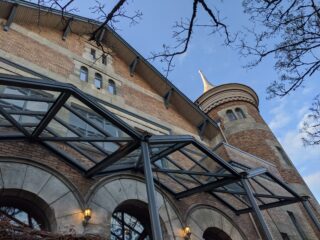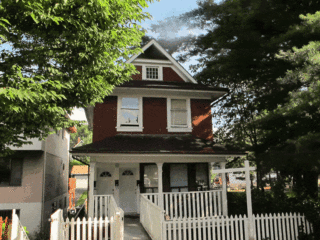Since 2015, the Heritage Energy Retrofit Grant program has been encouraging homeowners to improve energy efficiency and reduce greenhouse gas (GHG) emissions from their homes, with guidance and incentives tailored to pre-1940 and Heritage Register homes. Starting with a home energy evaluation by a Registered EnerGuide Rating System Energy Advisor is a great way to identify ways to reduce energy use, improve comfort and cut GHGs. For the program, VHF has worked with program partner City Green Solutions and energy advisors knowledgeable about historic construction and the best ways to improve performance of older homes while respecting heritage character and avoiding unnecessary demolition and waste.*
*For homes and buildings with heritage significance, any changes, including energy efficiency improvements, should be considered with reference to the Standards and Guidelines for the Conservation of Historic Places in Canada, and the companion publication, Building Resilience: Practical Guidelines for the Sustainable Rehabilitation of Buildings in Canada.
For buildings with heritage designation, a Heritage Alteration Permit may be required for retrofits that make any changes to the exterior or to protected interior features.

Planning a Retrofit?
If you are planning retrofits for an older home or building, here are some key tips to consider:
-
Air Sealing
Air leakage is the main cause of drafts so reducing it is a key way to improve the comfort of a home and reduce energy use. Priority areas to address are large holes anywhere in the house, followed by any holes in the top floor (ceiling penetrations around light fixtures or attic hatches), then holes in the bottom floor (cracks in foundation walls, basement doors, electrical boxes). Finally address any holes on the main floor such as around windows and doors, top and bottom of baseboards, and electrical outlets. Installing a chimney damper for an open fireplace is a typical recommendation.
-
Heating Devices
GHG emissions can be reduced by installing more efficient space and water heating options. When it is time for a new furnace or water heater, choose a high-efficiency model, and consider an electric heat pump space or water heater. You can find a case study of a home that completed the Heritage Energy Retrofit Grant program here.
-
Insulation
Older buildings may not have adequate insulation and it can be a relatively easy way to make a big difference. Start with the roof space but you can also look at adding insulation to foundation walls and the underside of floors that are exposed to the outside. Cellulose insulation can be blown into wall cavities by an experienced installer without the need to remove interior or exterior finishes.
-
Windows and Doors
The performance of historic wood windows and doors can often be improved significantly through repairs, weather-stripping and air sealing measures, avoiding unnecessary replacement. The installation of interior or exterior storm windows can improve thermal performance, and cut drafts and noise. Retaining original windows and doors is often key for the heritage character of a house or building. It also keeps repairable materials out of the landfill and avoids replacement with new non-repairable energy-intensive materials.


